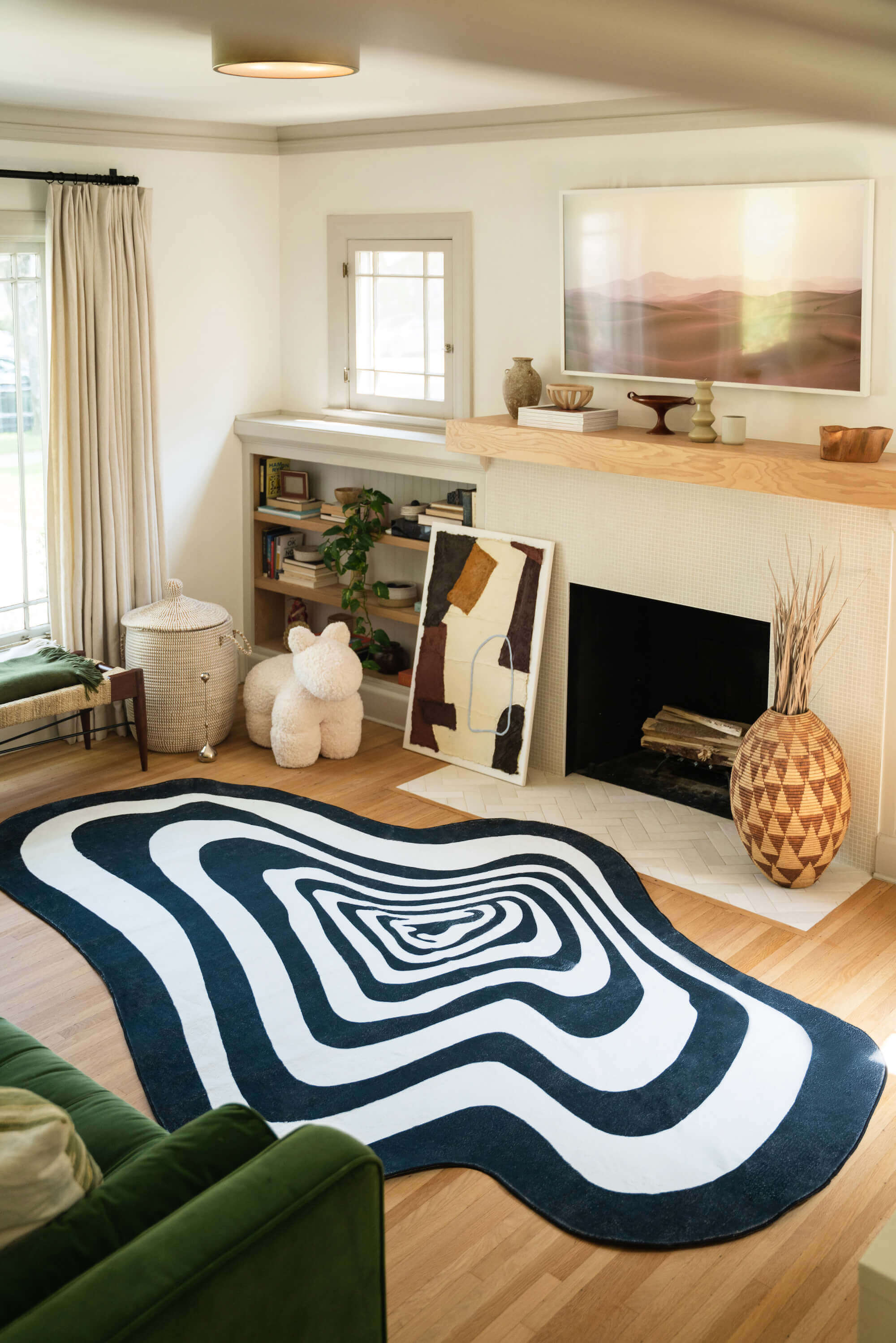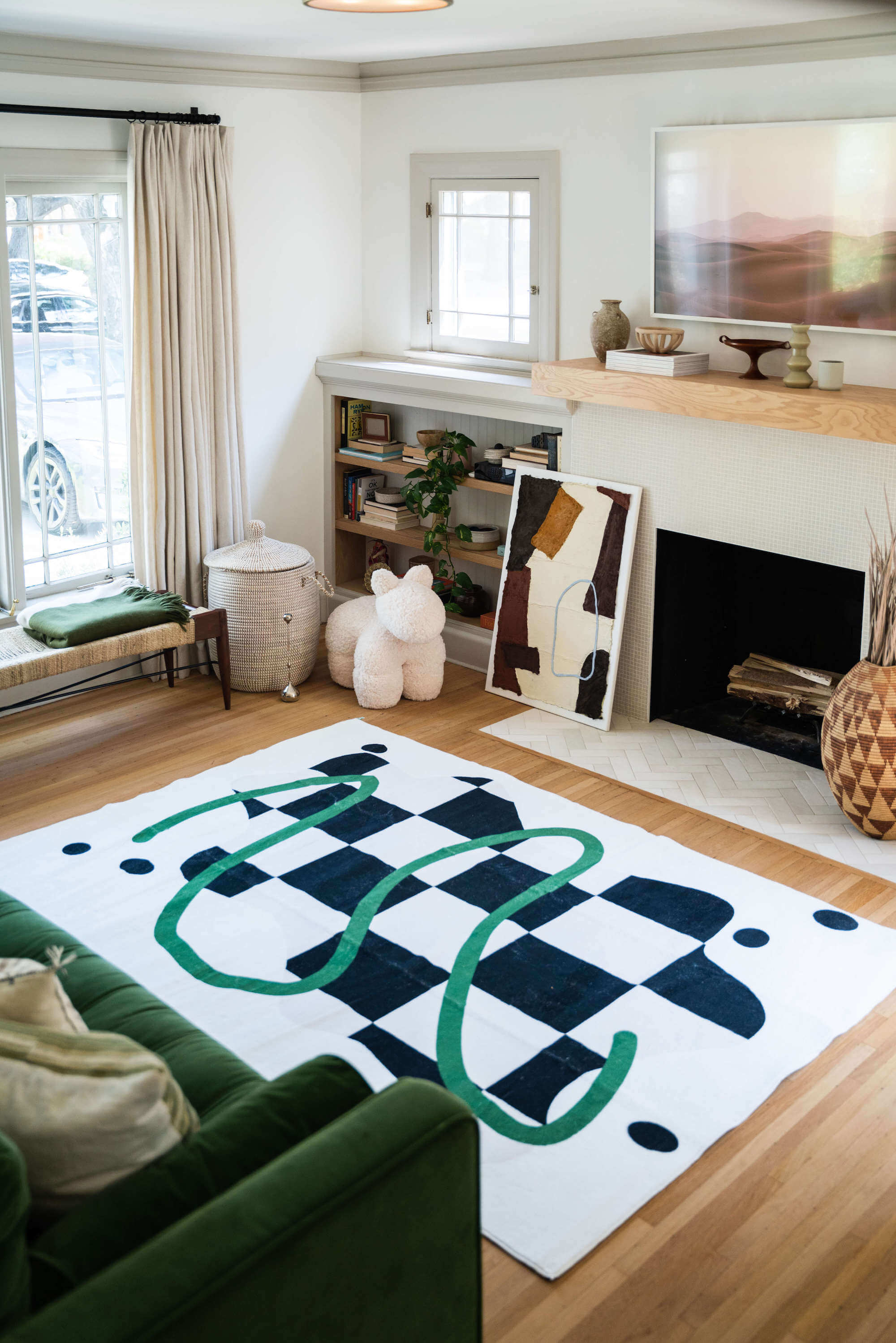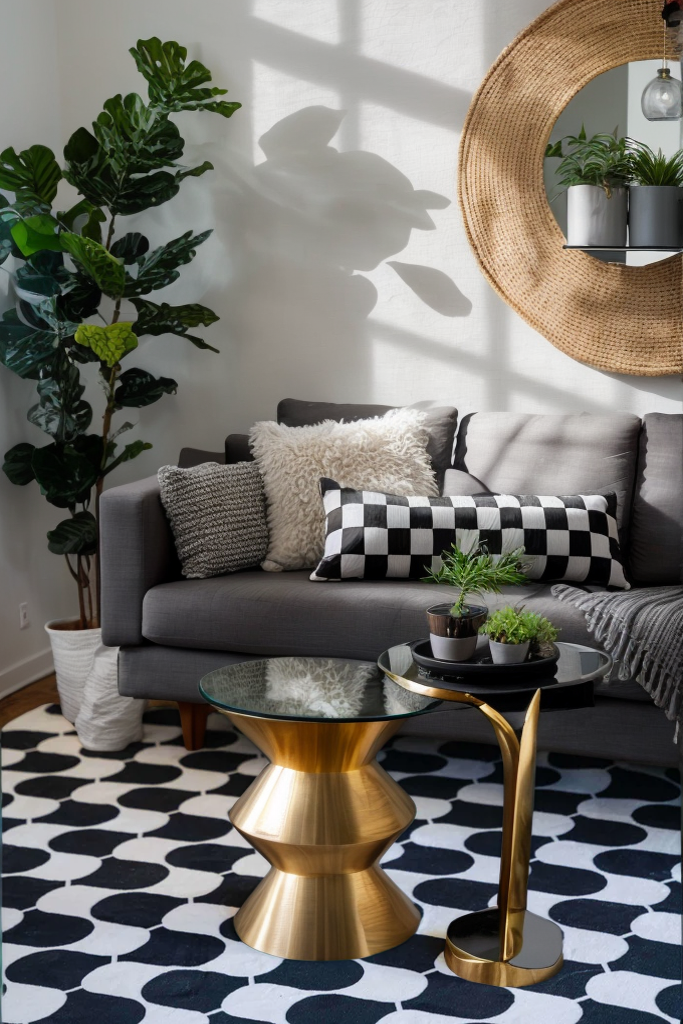A rug may seem like a simple detail, but the right size can make a room feel complete. Whether you’re furnishing a new space or updating your home, understanding standard rug sizes is the first step to getting the proportions just right. In this article, we’ll help you understand common rug dimensions, show you what works best in different rooms, and guide you toward choosing the perfect rug size for your space.
What Are Standard Rug Sizes?
Standard rug sizes refer to the most commonly available dimensions that fit typical room layouts and furniture arrangements. These sizes are designed to suit a variety of spaces, from small entryways to large open-plan living areas, making it easier to find a rug that works without the need for customization.
Knowing standard rug sizes is important because it helps you choose a rug that complements your furniture and enhances the flow of the room. A rug that’s too small can make a space feel disconnected, while one that’s too large can overwhelm the area. The right size creates balance, adds comfort, and helps define different zones in your home.
Standard Rug Sizes: Feet, Inches, and Centimeters
Rugs come in various sizes, so knowing how to interpret dimensions across different units is key to choosing the right fit.

Standard Rug Sizes in Feet
-
4x6 ft: A great choice for small spaces like entryways, home offices, or beside a bed. It adds comfort without overwhelming the area.
-
5x7 ft: Ideal for compact living rooms or under a coffee table. It defines a seating area and works well with a loveseat and accent chairs.
-
7x10 ft: Perfect for medium-sized living rooms where you want the front legs of sofas and chairs to rest on the rug for a cohesive look.
Rug Sizes in Inches
-
4x6 ft = 48x72 inches
-
5x7 ft = 60x84 inches
-
7x10 ft = 84x120 inches
Rug Sizes in Centimeters (CM)
-
4x6 ft = 121.9 x 182.9 cm
-
5x7 ft = 152.4 x 213.4 cm
-
7x10 ft = 213.4 x 304.8 cm
Standard Rug Sizes by Room Type
The best rug size often depends on the room. Each room has its own requirements:
Living Room Rug Sizes
In the living room, rugs help define seating areas and anchor furniture arrangements. Consider the following standard sizes:
-
5x8 ft (152x244 cm): Suitable for small living rooms, where the rug sits under the coffee table and in front of the sofa.
-
6x9 ft (183x274 cm): Ideal for medium-sized living rooms, allowing the front legs of sofas and chairs to rest on the rug.
-
8x10 ft (244x305 cm): Perfect for larger living rooms, accommodating all furniture legs on the rug for a cohesive look.
Dining Room Rug Sizes
For dining areas, the rug should be large enough to accommodate the dining table and chairs, even when the chairs are pulled out:
-
6x9 ft (183x274 cm): Fits a 4-6 seat dining table, providing sufficient space for chairs.
-
8x10 ft (244x305 cm): Suitable for a 6-8 seat dining table, ensuring chairs remain on the rug when in use.
-
9x12 ft (274x366 cm): Ideal for larger dining tables seating 8 or more, offering ample coverage.
Bedroom Rug Sizes
A well-sized rug in the bedroom adds warmth and comfort. Standard sizes vary based on bed dimensions:
-
Twin Bed:
-
5x8 ft (152x244 cm): Placed beside the bed or under the lower two-thirds of the bed.
-
-
Queen Bed:
-
6x9 ft (183x274 cm): Positioned under the lower two-thirds of the bed.
-
8x10 ft (244x305 cm): Fits under the entire bed and nightstands.
-
-
King Bed:
-
9x12 ft (274x366 cm): Accommodates the entire bed and surrounding furniture.
-
How to Choose the Right Rug Size for Your Space
Finding the perfect rug size is about more than just picking a look you love. The right dimensions can improve traffic flow, highlight key furniture pieces, and bring a room together. Here’s a step-by-step guide to help you choose confidently:
-
Measure your space: Start by measuring the length and width of your room. Take note of any architectural features or furniture that might affect rug placement.
-
Plan your furniture layout: Decide where your furniture will go before choosing a rug. For example, in a living room, determine whether the sofa and chairs will sit fully or partially on the rug. In a bedroom, consider whether the rug will go under the bed or beside it.
-
Leave enough border space: A good rule of thumb is to leave 6 to 12 inches of bare floor between the rug and the walls. This creates visual breathing room and prevents the rug from feeling cramped.
-
Match the rug shape to the room or furniture: Rectangular rugs suit most living rooms and bedrooms, while round or oval rugs work well under circular tables or in entryways.
-
Avoid going too small: One of the most common mistakes is choosing a rug that is too small for the space. A rug that just floats under a coffee table or barely peeks out from under a bed can make the room feel disjointed or unfinished.
Tip: When in doubt, size up. A slightly larger rug will often make a room feel more cohesive and inviting.
Choosing the right rug size is key to pulling a room together. It adds warmth, defines the space, and makes everything feel more complete. To explore more size options and find rugs that fit a variety of layouts, feel free to browse our curated designs at RUGGIPOP.
Frequently Asked Questions
How do I determine the right rug size for my room?
The best way is to measure your room and furniture, then consider how the rug will interact with your layout. The ideal rug should create a balanced, comfortable space.
For more information:
Feel free to contact us at ruggyruggyaucn@gmail.com or visit RUGGIPOP for more design tips and rug size recommendations.










